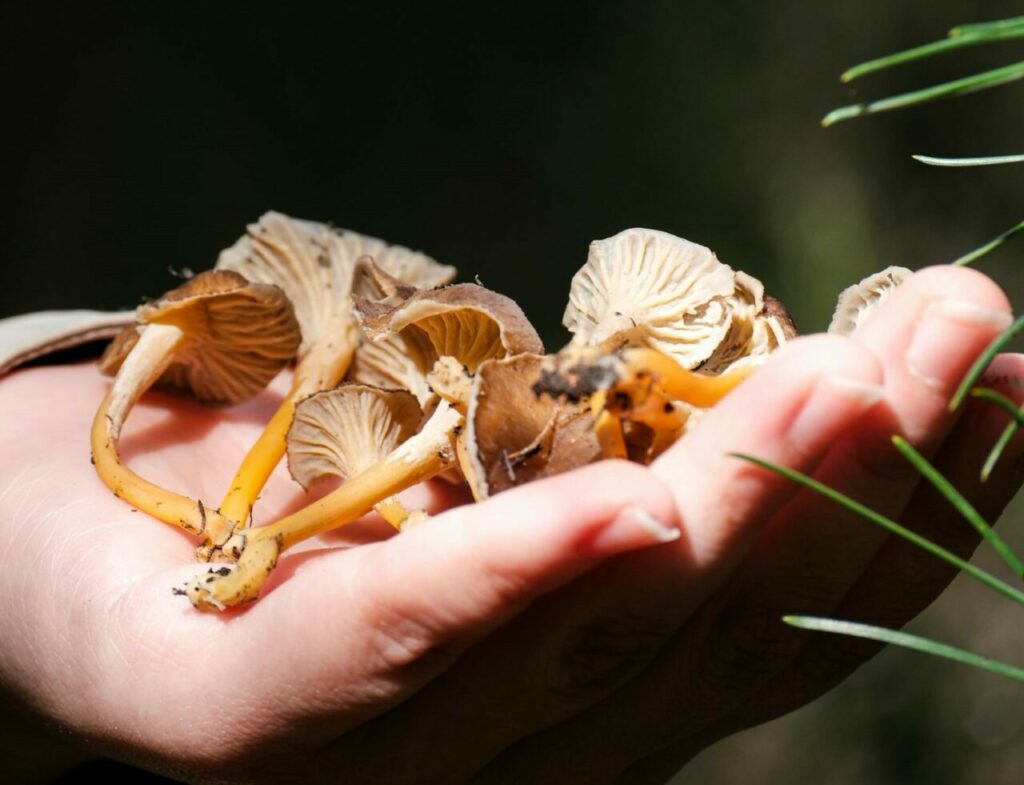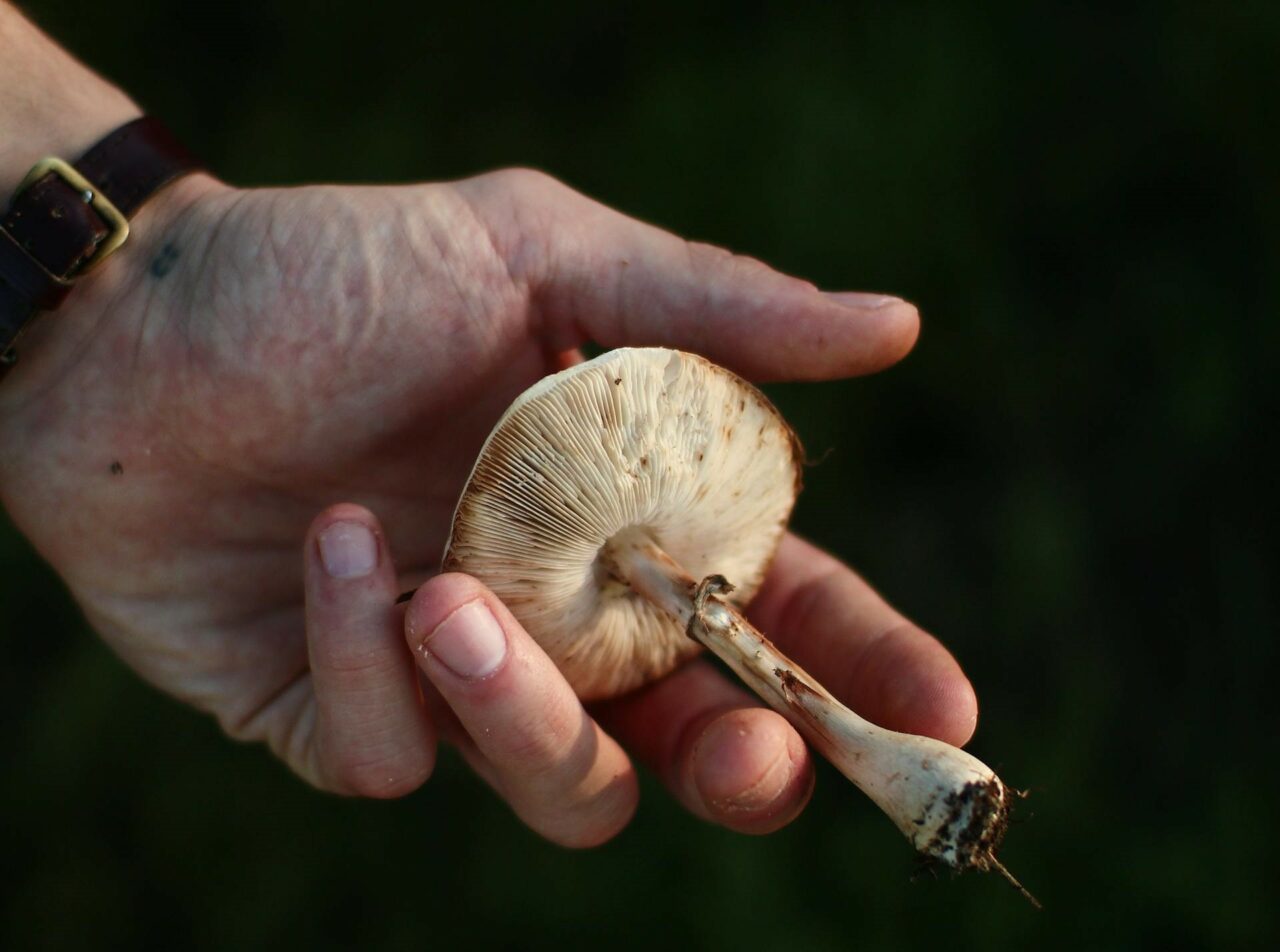Traditionally psychedelic, Psilocybin mushrooms behave similarly to LSD as they act as a serotonin 5-HT2A receptor agonist. Their potential for assisting therapy for mental health disorders is currently under investigation. Such disorders include major depression-related emotional distress, anxiety, cluster headaches, and migraines.
Understanding how shrooms contribute to these conditions requires a deep dive into how they are metabolized in the body. This knowledge allows both researchers and users to understand how the active compound produces its psychological and therapeutic effects. This article will offer a basic explanation of the pharmacology and pharmacokinetics of psilocybin.
[toc]
Key Takeaways:
- Upon oral intake, half of the psychedelic fungi are absorbed and spread throughout the body.
- The compound in fungi undergoes dephosphorylation with the help of the enzyme alkaline phosphatase, primarily taking place in the liver.
- Approximately 3.4% of the compound is expelled in its original form within a day, with the major part being discharged as a stable metabolite.
What is Pharmacokinetics?
Pharmacokinetics (PK) is the scientific study that explains how substances, such as drugs, are processed by the body once they are introduced into the system. Although related, it is different from pharmacodynamics, which explores how a compound interacts with the human body. PK focuses on four primary aspects: absorption, distribution, metabolism, and excretion (ADME).
This understanding of these processes enables healthcare providers to prescribe medications that are most beneficial and carry the least risk. It also allows them to customize treatments according to each patient’s distinctive physiology and lifestyle.
What is the Relevance of Pharmacokinetics to Psilocybin?
Psilocybin and psilocin, the main active compounds in certain magic mushroom species, have captured significant attention from researchers and users. Pharmacokinetics helps to understand how the body deals with mushrooms that contain psilocybin and their potential effects, whether for medicinal or recreational use.
These compounds are commonly referred to as “magic,” “psychedelic,” “medicinal,” or “sacred.” The fungi containing these compounds are consumed, with The varieties of mushrooms, their provenance, dimensions, the conditions in which they thrive and are dehydrated, and their age can significantly alter their concentration levels.
While these mushrooms are naturally found in the wilderness, scientific methods have been devised to produce them in laboratories. Both naturally occurring and lab-produced versions exhibit low toxicity, but can occasionally cause minor side effects like nausea or vomiting.
Despite these physical reactions, the compounds within these mushrooms have shown potential therapeutic advantages due to their safety profile and non-addictive qualities. These benefits have sparked research into their use in psychotherapy, particularly as a remedy for anxiety and depression.
The 4 Stages of Pharmacokinetics
Psilocybin, the compound present in these mushrooms, is inactive in its original state and functions as a prodrug, transforming into its active state, psilocin. Enzymes such as alkaline phosphatase facilitate this conversion, enabling psilocin to be absorbed and distributed throughout the body, reaching various tissues. However, following oral intake, psilocybin cannot be traced in the circulatory system, feces, or urine.
Absorption
Absorption is the process by which the compound enters the bloodstream from the point of administration. It affects the rate and effectiveness of the compound reaching its target, such as the plasma. Oral administration is the most commonly used method. Inhalation has been tested, but does not yield results as effective as oral consumption.
The absorption process also involves the release of the compound from the dosage form during oral intake. Factors such as delays in the throat or esophagus can influence this, potentially causing slower results or irritation. Once the compound reaches the stomach, the acidic conditions may start to break it down before it enters the bloodstream.
Animal studies suggest that only about 50% of orally administered psychedelics are absorbed and distributed throughout the body.
Factors Affecting the Absorption Process
Several elements can affect the absorption process, resulting in variations in the onset, intensity, and duration:
- Stomach Contents: Consuming on a full stomach can postpone the process as it slows the onset of effects. Absorption is faster when the stomach is empty.





